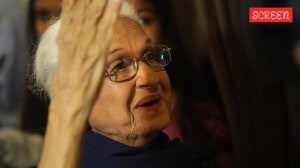Giving child labour the boot
The World Cup beginning in Paris next month will be a time to tell the story again. Of the over 8,000 children crammed in dark rooms in Sial...

The World Cup beginning in Paris next month will be a time to tell the story again. Of the over 8,000 children crammed in dark rooms in Sialkot, Pakistan, making three-quarters of top quality hand-sewn balls used everywhere from playgrounds in the developing world to stadiums in Europe and Latin America. It’s a booming $800 million industry that has made Sialkot synonymous in human rights circles with child labour. Like the glass and carpet factories and quarries of India, garbage heaps of the Philippines, the street children of Brazil and Colombia, and the children of work in eastern Europe.
Last year, this time, Sialkot teamed up with human rights groups, western sporting giants and the International Labour Organisation (ILO) to draw up a plan to eliminate child labour within 18 months. The result the industry at least partially went underground taking the working children with it or children took work home.
Next week, some children from Sialkot will join others from India, Brazil and other places totell the ILO they need new laws that will protect them.
Their visit to the labour body at the start of the annual conference will be preceded by a march through the streets of Geneva and past shops that stock goods made by them and sold at prices that are 300 to 500 times more than what they are made for.
Recent surveys by the ILO, which estimates that some 250 million children worldwide work, show Asia had the highest number of working children accounting for 61 per cent of the total compared to Africa’s 32 per cent and Latin America’s 7 per cent. The ILO is warning that "industrialised countries are not free of the scourge either". An investigative report published by the Associated Press, last year, found that more than 290,000 children were employed illegally at some point in the US in 1996. In eastern and central Europe, the ILO says, child labour has been reappearing in the wake of "social and economic dislocation caused by the transition to a market economy". The debate has become deeplydivisive.
"In some developed countries, we have pockets of children who are encouraged to see work as an alternative to gaining professional skills. It is not just a question of poverty," a United Nation’s Children’s Fund official says. Some hundred years ago, Charles Dickens immortalised the desperate working conditions of children in London’s factories. Today’s demands for protection for children is backed partly by two concerns — one economic, the other moral. The first goes under trade with the West, demanding protection from Asian exporters who use low cost labour, sometimes using children. The other is simply the intolerable spectacle of children working in dangerous jobs. That is what the ILO is seeking now — a new child labour convention that will ban activities deemed intolerable. But it remains far from clear whether international campaigns do anything to help children.


- 0115 hours ago
- 0215 hours ago
- 034 hours ago
- 047 hours ago
- 0521 hours ago





























